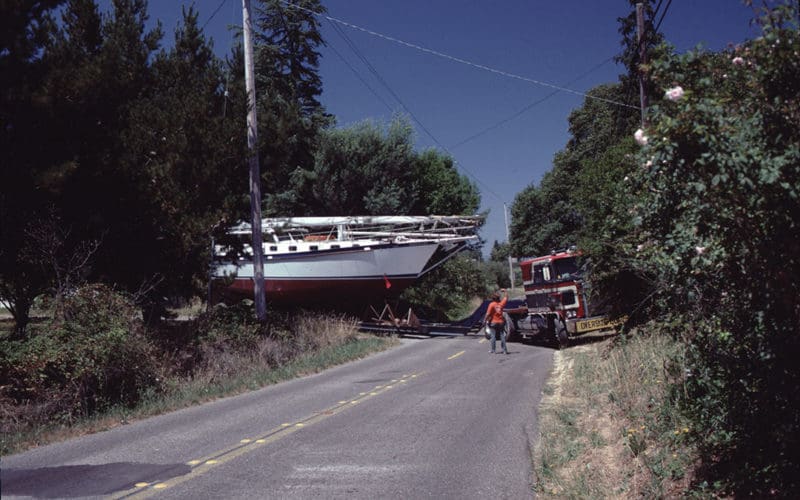
Our boat Havaiki was a 35-ton steel ketch. She was 48 feet on deck and 59 feet overall with the bowsprit and a six-foot draft. The boat was designed by Myron Spaulding of Sausalito, a well-known and respected yacht designer, and was built by Samuel Kerr Robinson of Sebastopol, Calif. Robinson was originally from Scotland and owned a body/fender shop in the San Francisco Bay area. He wanted a boat with a shallow keel and masts on tabernacles so they could be lowered and the boat could get under bridges. He had originally planned to navigate the channels in Europe — although he never managed to get the boat there.
Robinson was an outstanding welder and Havaiki (originally named Seahorse II) was built of 3/8-inch steel fore and aft sheets rather than plates. Her keel was made of ½-inch steel. She was strong as strong could be. The engine was fresh water cooled, so no salt water entered the engine except for the exhaust cooling. The keel was filled with fresh water, which was cooled by the sea water outside. The water in the keel was then pumped through a heat exchanger that cooled the fresh water in the engine.
It took Robinson five years to build her. Havaiki was launched and Coast Guard certified in 1981. Robinson and his wife sailed her to New Zealand and back and weathered a hurricane at sea. On his return, he used her as a charter yacht in the Bay Area before taking her back to his apple orchard where I first saw her.
Havaiki had a few things we didn’t want in a yacht, but the positives outweighed the negatives. She was a center-cockpit, semi pilothouse ketch which meant that the owner’s stateroom was aft of the cockpit. She carried 1,000 gallons of diesel in two 500-gallon tanks in the keel area and had two 150-gallon stainless steel water tanks in the engine compartment, one to port and one to starboard. She had a diesel stove (which we had never heard of) that also provided heat for the cabins and a refrigerator/freezer that gave us tons of trouble for the first few years but ended up doing a great job.
J.R. Williams

